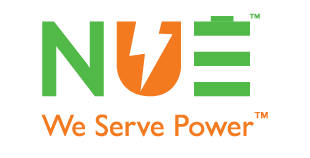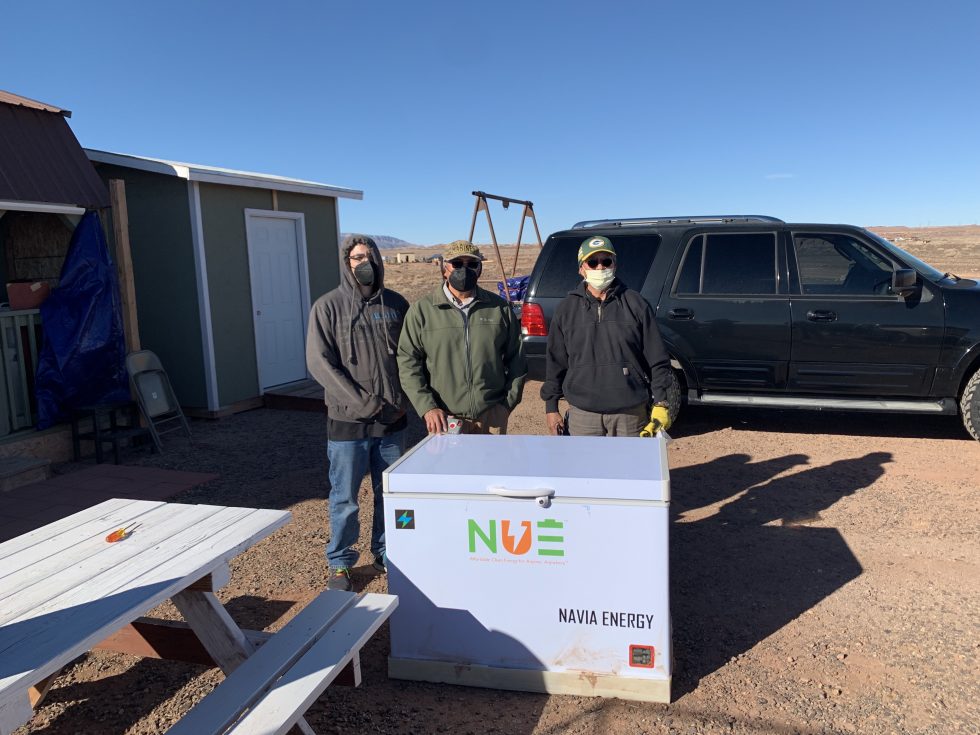Read our chat with New Use Energy COO Lee Feliciano about NUE’s deployment to Navajo Nation to install solar freezers to diabetic veterans living off-grid.
Q: How did this project on the Navajo nation come about?
Lee Feliciano: We have initiated at least four or five different conversations with various organizations and individuals in the Navajo Nation and one of them is with VMLC (Veterans Medical Leadership Council) and NASVU (Native American Sustainability for Veterans and those in Uniform).
There’s a number of projects happening in Navajo Nation related to PPE, running water and energy for the people who need the infrastructure and support for these amenities. There are approximately 15,000 households living off the grid on the Navajo nation. When they’re off the grid, not only do they need power, they don’t have running water and you know, other amenities.
But on a longer-term basis, they started off with water. They’re doing water tanks and then, but they had already identified the need after water would be energy. They brought in some veteran volunteers and I was introduced to Bill Ward who was a former utility engineer.
Bill and I built a rapport and I took him through why our products were the way they were and the pros and cons. So when the time came to start a project, he called on us to execute the work. But there was an interesting twist. Even though the original idea behind the partnership was energy, the group received a grant from USAA that slightly changed the scope of what we were going to do.
I don’t know what the specific conditions of the grant was but they told me they wanted to focus on diabetic veterans who lived in Navajo Nation off the grid. So, our immediate idea was we’ll provide a power system and a refrigerator (our SunFreez product) for them to store their medicine and fresh food.
Q: Talk about the need for reliable energy on the Navajo Nation.
LF: One of the interesting things we learned is some of them are unique scenarios where there’s a power pole close to the house but the home can’t get connected to the main utility. I think more often though there’s the classic cases of just being too isolated from where the main power lines run. And you know, when I was doing utility scale solar, our rule of thumb to run a distribution line was about a million dollars a mile. So you can imagine, it’s not very cost-effective to run power lines.
Q: What did NUE specifically do on the ground with these freezers?
The entire install process takes about an hour. It involves unpacking the freezer and bringing it into the house. You have to have a place to put the freezer and it’s got to be close to an exterior wall. Because what we do is we drill a little hole in the wall and then we put the solar panel on the outside, ideally unobstructed facing south. And then we connect the solar panel outside to the charge controller which we mount on the wall inside the house.
The freezer is actually connected to the battery via the charge controller. So the actual mechanical attachment of all the components is probably like 30 minutes. The rest of the time after set up is educating the recipient. We ask them if they want it set as a fridge or freezer. Then we go through common troubleshooting issues they might face and how they can check them.
Q: From a personal perspective, what did it feel like to be able to help these people and what was their reaction to having one of these freezers installed?
It was just impactful on so many levels. Number one, first of all, is seeing the conditions that a lot of these recipients lived in it was pretty harsh. These veterans have very modest dwellings and the environment they live in very harsh. It can be really hot or really cold. Most of these guys have wood stoves and definitely no air conditioning. And some don’t even have a real kitchen or a place to store frozen food. And so the living conditions were real eye-opener for a place that’s only five hours away from Phoenix.
Understanding that what we were doing was literally life-changing for these people was incredible. People telling us “hey, I can actually have milk now,” or joking that the three hour drive to the grocery store would be a lot more productive because they can actually bring back a bunch of stuff that they could keep.
This was the first time I actually got to see what was going on inside the community itself with members of the community.
The other thing that I realized is even though I know at least two companies that are in the business of doing off-grid systems, serving the Navajo nation, that these people had never heard of because of how spread out it is. And the need is just so evident.
Q: What are some lessons learned in this project that can apply to what NUE does in 2022?
LF: I think it was a huge validation for our original concept and our mission to replace small generators. When you look at statistics about what’s the size of the small generator market is in the United States or even globally – I don’t think that tells the full story.
Because there are a lot of people out there without generators that are not part of that equation. Yes, it is true that we are a clean, sustainable alternative to a small portable generator. But we’re so much more than that. I think this opportunity has opened our eyes to the fact that the projects like this are significant as well.




